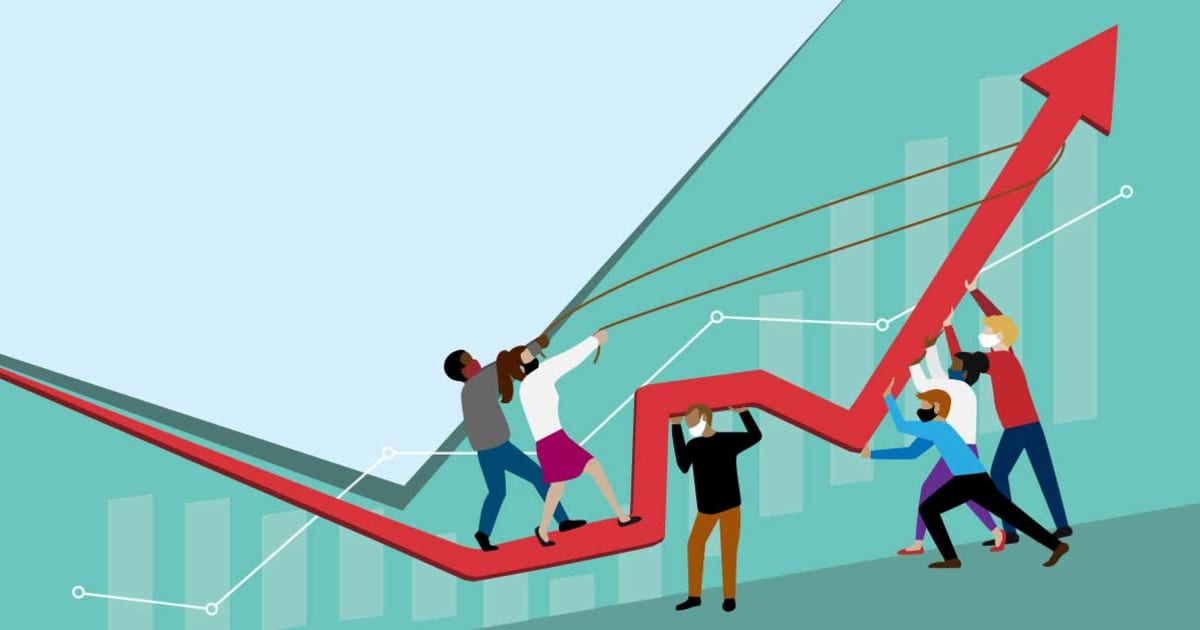By Contributing Writer
As part of an op-ed series, FIU News shares the expertise and diverse perspectives of members of the university community. In this piece, Howard Frank, director of FIU’s Jorge M. Pérez Metropolitan Center and a professor of public policy and administration, shares his perspective on how the economy has changed since the pandemic began, along with what the future may hold.
By Howard Frank
March 2022 will mark the second anniversary of Covid-19’s onset. Since then, nearly 900,000 Americans have died from the pandemic and the economy has experienced a lockdown-driven recession and significant recovery. With the Omicron variant receding and widespread diffusion of vaccines and treatments, there is hope COVID is en route to endemic status.
Thus, the second anniversary provides an opportunity for taking stock of where the economy is heading.
Positives
Unemployment is at 3.9 %, well below the COVID peak of nearly 15 percent in April 2020. Retail sales are strong, reflecting pent-up consumer demand. FICO scores have reached an all-time high of 716, with the greatest gains coming in households in the “Fair” range of 550-599; this reflects lower unemployment, stronger family balance sheets and lender flexibility during the crisis. Inflation is running hot — 7.5% year-over-year, the highest in 40 years. Nevertheless, there is evidence of moderation in consumer durables such as automobiles as supply bottlenecks moderate. Labor force participation has inched up from its pandemic lows.
Negatives:
Inflation has overtaken COVID as the No.1 issue in public polling, an understandable result of inflation-adjusted wages falling 3.4 percent behind the cost of living. The “Great Resignation” has resulted in a continuation of longstanding declines in labor force participation, particularly among the 55+ age group and women with childrearing responsibilities. The continued decline in labor force participation will contribute to short- and long-term economic sluggishness. Impending Federal Reserve rate hikes will further impede growth and are already causing stock market gyrations reflecting winners and losers in the emerging post-COVID economy.
Overall
The American economy is like a star athlete playing through psychic, physical and economic pain. Our current inflation is akin to that experienced after World War II, when the end of wage-price controls and rationing lead to a surge in demand that outstripped supply. That took two years to resolve. History may repeat itself.
Could a “Deltacron” variant that combines Delta’s health outcomes with Omicron’s transmissibility derail economic recovery? Yes. But that wildcard is impossible to predict and difficult to discount. Meanwhile, consumer spending — 70 percent of the American economy — remains strong.
Nonetheless, economic downturns leave scars. On its face, the COVID economic shock is likely to leave two scars in particular. The first is continued downtrend labor force participation, facilitated in part by high housing and stock market values that allow older workers to retire.
Second, the ultra-low interest rates that started with the Great Recession of 2009 and continued with the stimulus undertaken to stem the COVID downturn are clearly ending. While interest rates will remain accommodative when examined through a long historical prism, the coming transition will disrupt businesses and sectors dependent on low borrowing costs and commodity prices. Ultimately, the coming months will usher in a new era of hope and uncertainty.
This article is based in part on the Met Center’s monthly COVID Economic Recovery Index developed by our researchers. The Recovery Index is aimed at assisting local policymakers and economic and community development officials in strategy and program development. The index tracks key performance indicators at the county level against state and national statistics, in three categories essential for the recovery of the region: health, economy, and housing.
View the full report on the two-year impact of Covid-19 here.
Learn more about the COVID Economic Recovery Index here.
Search
Submit a story or give us feedback, we want to hear from you.
Looking for some FIU history? Find stories from the vault at newsarchives.fiu.edu.
Discover The 'Can't-Fail' CPA Offers With Just 1- Click
